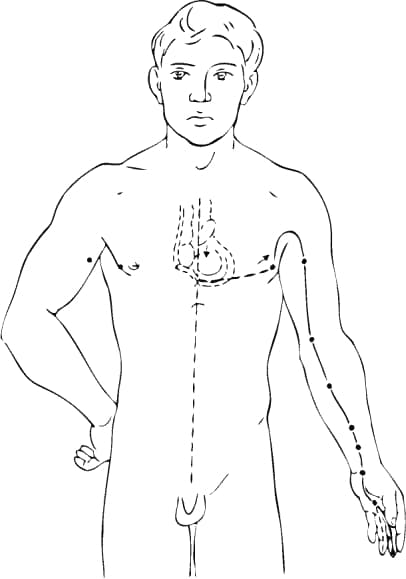
The Pericardium Meridian (MC)
Meridian of the pericardium belongs to the system of manual Yin meridians. Its pair is the triple burner meridian, and its element is fire. The meridian receives energy from the meridian of the kidneys, transfers it to the meridian of the triple burner through 9 points. The maximum activity is from 19:00-21:00, the minimum activity is from 7:00-9:00.
Functions of The Pericardium Meridian
The main function is to protect the heart and provide it with additional assistance. Together with the meridian of the triple heater, it participates in the management of the body’s energy system, affects the endocrine system and metabolic processes. It influences the central nervous system, intellectual activity and the psyche.
The meridian begins at the fourth intercostal space, rises to the third intercostal space, approaches the shoulder, passes through the center of the inner part of the shoulder, moves through the elbow joint, then along the inner part of the forearm to the center of the palm (Lao-gong point) and ends at the tip of the middle finger.

Symptoms and Diseases Related to the Imbalance of the Pericardium Meridian
A sign of redundancy
Chest pain, irritability, dysfunction of the cardiovascular system, headaches with a feeling of hot flashes, pain in the upper extremities, constipation, redness of the sclera, shallow sleep.
A sign of insufficiency
Increased fatigue, depression, palpitations, shortness of breath, abdominal pain. Weakness in the upper extremities, jaundice of the sclera, diarrhea, deep sleep and many dreams.
Diseases of The Pericardium Meridian
Diseases associated with the meridian of the pericardium: heart disease, pain in the heart and chest, angina, tachycardia, circulatory disorders, shortness of breath, suffocation, psychological disorders, anxiety, uncertainty, lung diseases, arthritis of the shoulder and elbow joints, pain in the hands and palms.